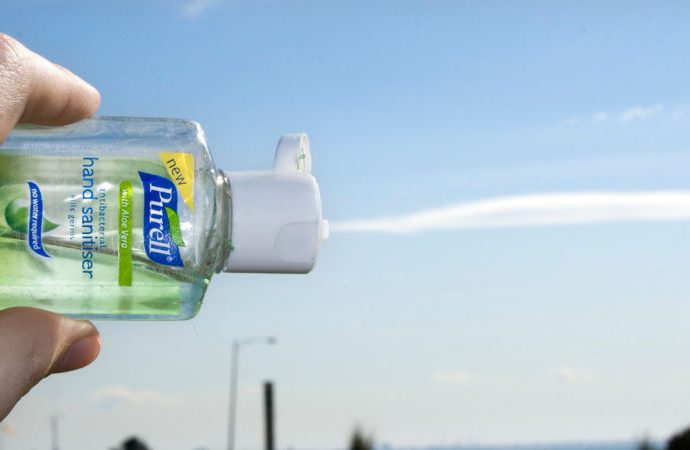If a police officer pulls you over for driving while intoxicated, you could be brought in for a breath alcohol test. If that happens, you’d better hope the test operator doesn’t slather their hands in an alcohol-based hand sanitizer, first.
Alcohol-based hand sanitizers make frequent appearances in law enforcement offices—they’re often found next to the fingerprinting machines, for example. But they emit vapors just like regular alcohol that could disperse through the air and even enter the mouth. A new study confirms that these vapors can cause the breathalyzer to error out—or even report a positive reading.
“In virtually every jurisdiction in the US, there are restrictions about allowing subjects going to be tested to come into contact with alcohol in any form or fashion during the fifteen or twenty minutes, depending on the jurisdiction, immediately preceding the test,” study author Brian Lutmer from the Missouri Department of Health and Senior Services Breath Alcohol Program told Gizmodo. “We want to make it clear to the operator, don’t subject yourself to being around alcohol, or allow alcohol fumes to be in the air—because that can also affect the test.”
Prior studies have found evidence of hand sanitizers distorting readings on handheld devices. This time around, the study authors focused on evidential breath alcohol instruments in police stations, the kind that can be used as evidence of intoxication in court.
The researchers tested 65 subjects in a controlled, ventilated room, first administering a handheld breath test like an officer might. Then, one of two operators sanitized with a golf ball-sized dollop of foam or two pumps of Purel and rubbed their hands together until dry. The operators finally gave a series of breath tests to each subject on one of three machines, holding the tube while the subject blew.
Of the 130 tests, 13 resulted in positive breath alcohol concentrations, even though the subject hadn’t drunk anything. Another 41 tests caused the machine to error out, according to the study published last week in the Journal of Forensic Sciences.
There are limitations to a study like this, said Lutmer. Perhaps with more testing or other devices a different set of results might be produced. And when the machine did record a reading, it was lower than those recorded in past studies, including one performed in a hospital setting.
While jurisdictions generally restrict the subject’s access to alcohol prior to a test, they might not mention the operator—the New York Police Department doesn’t mention whether the operator can come into contact with alcohol, for example (see Patrol Guide procedure 208-40). “No alcohol should be used in the immediate vicinity during that deprivation period just to ensure that nothing else can interact with the test,” said Lutmer—by the test subject or the operator.
As far as takeaways go, your first should obviously be don’t drink and drive. But if you’re already sitting in the testing facility next to a breath alcohol testing machine, cross your fingers and hope the operator is taking the same 20-minute no-alcohol-access time as you.
Source: Gizmodo

































Leave a Comment
You must be logged in to post a comment.